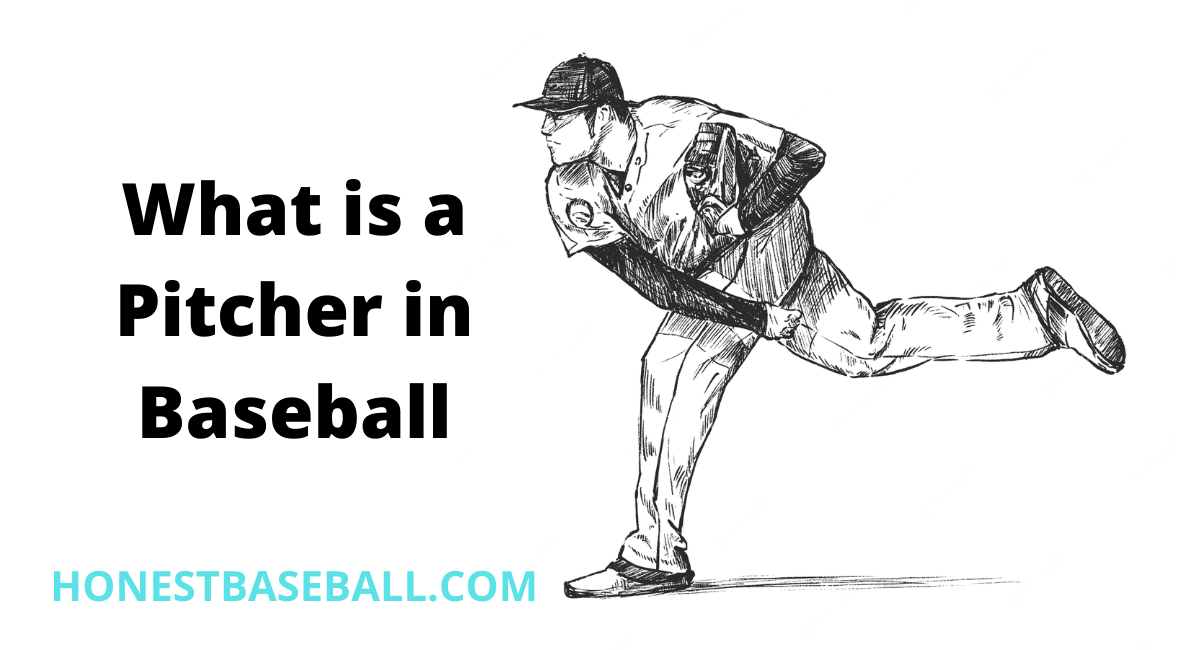Basically, we all know what is a pitcher in Baseball, right? Though we do not know, something is additionally involved in the pitcher’s role. Like different styles, levels, and throwing categories.
When I started my coaching career, I learned many things. And I always wanted to share that information with my students. I always take special sessions for my newcomer students. When I introduce the game excitingly, I Emphasize some specific parts and encourage them in that way.
For example, if I saw a boy with good throwing skills, then I would give him extra time to teach him what is a pitcher in Baseball. And how he can get a bright career by being a pitcher.
In this article, I will discuss what is a pitcher in Baseball and everything you need to know about it. I designed this article for players with good pitch potential or who want to be one.
What is a Pitcher in Baseball?
To know about a pitcher, the definition can be – The player who throws a Baseball to the catcher, standing on the pitcher’s mound. His target is to prevent the hitter from hitting the ball or making him out. In the defense position, pitchers got the No. 1 position.
The game mainly depends on the pitcher, who initially controls the ball. This pitcher has many levels, roles, and throwing differences.
So, what is a pitcher in Baseball? In simple terms – The player who plays for the defense team. Who throws and fulfills called pitches from the pitcher’s mound. He also helps the first baseman as a fielder. And his main objective is to strike out the batter or not give any Home Run.
Do you know you can build a Portable Mound in your house for just under Hundred Dollars? Let's find out how || How to build a portable pitching Mound.
Pitcher Baseball Position
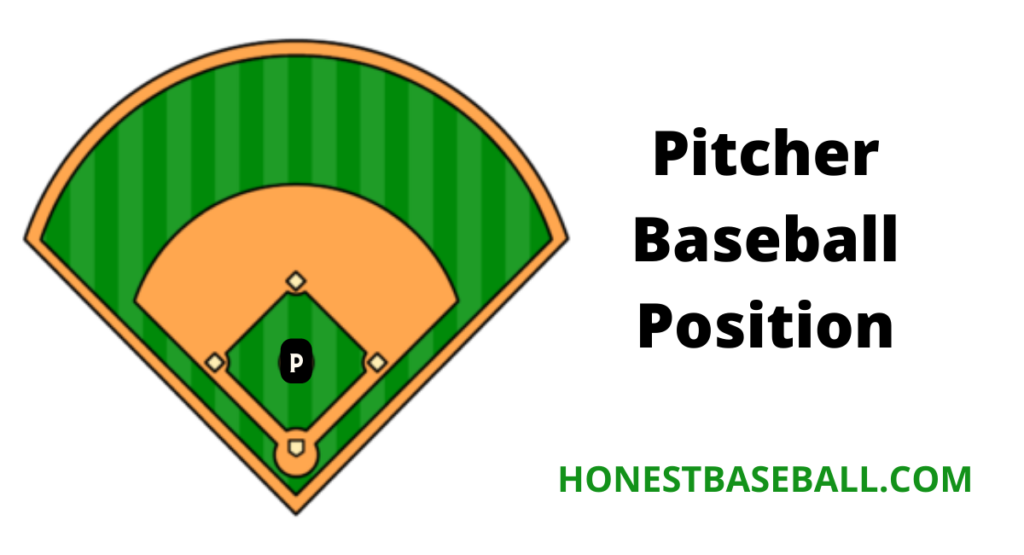
On the Baseball field, there are different positions and roles. And there is the pitcher Baseball position that takes place on the defense side. It depends on whether you are on the Defense or Offense team.
A pitcher stands on the pitcher’s mound in the infield diamond area. He throws the ball to the catcher and tries his best so the hitter can not hit the ball.
Baseball Pitcher Throwing – Types of Pitching

To understand what is a pitcher in Baseball, you must know about the different types of Baseball Pitcher throwing. That will help you to know them better.
Pitchers are mainly separated into two categories. Right-Handed and Left-Handed. And they can present various types of pitching. Any of the pitching styles can be used by an experienced and elite-level pitcher.
If a pitcher can throw any sort of pitch, it will be difficult for the batter to execute the perfect swing. As a result, the chances of hitting are reduced.
Read this article to learn about many good pitches you can throw in a Baseball game || What are the best pitches to throw in Baseball
The Pitches are:
01. Change Up (CH)
This one is a standard off-speed pitch. This is also known as the slowest pitch. Most starter pitchers apply this pitch in the game, which is strategically a perfect deception. However, most relief pitchers do not use this. Because they only face one hitter and do not require deception.
If you throw an excellent change-up following good timing, the hitter will start his swing before or after the pitch reaches the perfect spot. As a result, he will miss the ball or make poor contact. But if the hitter knows what is coming, he will have the best shot because of the low velocity.
You can have different types of gripping to make a good change-up throw. In general, you hold the ball deep in your hand. Or leave it on your palm.
02. Curve Ball (CV)
The curveball is also known as a hanger, going with a straight trajectory and sub-fastball velocity.
It is kind of a version of a slider, but it has more breaks. And helps to make the hitters off balance easily. If you can throw a curveball good enough, the hitter will think of it as a fastball. Later it will start swinging.
Professional Baseball pitchers usually adopt either the curveball or a slider. Throughout history, the curveball is kind of a typical pitch. And most of the time, catchers show two fingers down, signaling for a curveball.
You can pitch a curveball with different grips. Like the professionals, you can use sweep and sideway trajectory or straight downward. You can learn more from this post about the difference between a curveball and a slider.
03. Cutter (FC)
This is kind of a fastball. But the closer it gets to home plate, the more it slightly moves away from the pitcher’s arm side. A professional pitcher usually adopts this throwing style, especially for handling an opposite-handed hitter.
Throwing a cutter is all for creating a deception. A hitter is trained to hit a four- or two-seam fastball. And a cutter works entirely opposite and comparatively goes to the home plate slowly. Overall, these two variations in a cutter make the pitch hard to give a good swing.
Learn more about Cutter and how to throw it || What is a Cutter Pitch?
04. Eephus (EP)
Eephus is the rarest pitch that a pitcher throws. It has the lowest speed, and if the hitter expects a standard throw, he will most probably miss it.
A good eephus throw goes very high from the ground. And follows the same trajectory path as a slow-pitch softball. Where an average fast pitch has twice the speed of an eephus, so, in a general sense, a hitter will swing early and miss it.
However, if the batter can keep most of his weight on the back and make a normal swing, the ball will travel to another dimension. As the pitch will be the easiest one for the hitter.
Do you want to learn and throw an Eephus properly? We got the perfect article for you || What is an eephus pitch
05. Fork Ball (FO)
A Fork Ball is also kind of the rarest pitch in Baseball. It can be the hardest pitch for any pitcher to throw. Before throwing it, you have to jam it with your index and middle finger, along with a downward wrist snap. Because there needs to be more torque involved. As a result, it will have downward movement during the journey to this plate.
06. Four Seam Fastball (FA)
Among the other pitches, this one is the fastest and goes straight. Most professionals use this pitch as their frequent choice.
This pitch is also known as the most straightforward to throw as it requires the slightest movement. The only goal is to send the ball to the plate when you throw the ball following a four-seam pitch. Way before the batter makes the swing. Or even if the hitter can manage to make a late contact, it will be a poor hit.
To throw a four-seam fastball, place your index and middle finger between the two seams touching the edges. And put the other two fingers on the opposite side freely.
07. Knuckle Ball (KN)
Pitchers do not use this throw much. Its primary purpose is to be a better substitute and make an unpredictable journey to the plate.
A knuckleball travels to the plate at a lower velocity than a usual pitch. For an erratic movement, this pitch is challenging for both hitter to hit and the catcher to catch.
Overall, this knuckleball is very hard to adopt. Because of the low velocity, if you can not throw it by making it more versatile, it will be a piece of cake for any hitter to hit. And if you fail to throw a good one, the backlog is super high—this is why only a few MLB players prefer to throw this pitch.
Basically, the name comes from the grip. You plant your fingernails on the ball’s surface. And hover or touch the ball with the bellow of your knuckle. Then you throw it with ease.
08. Knuckle Curve (KC)
This one is a mix of spin and the knuckleball (I hope you get it from the name). If you can throw a good knuckle curve, you can have a slow curve and an unpredictable flattering.
Throughout history, very few have mastered this knuckle curve. And they do not even use this very often. It is a secret and surprising attack from the pitcher to make a deception.
You can grip the ball (bending one of your fingers) and give a snap of your wrist while throwing. Overall, this pitch gets more spins and moves faster.
09. Screwball (SC)
A screwball breaks and goes to the opposite of your throw. And requires unorthodox motions. Some pitchers rarely use this pitch because it puts too much pressure on the hand.
For throwing a screwball, you have to snap your wrist, making a curve from your glove side (from palm to face distance).
The throwing is challenging because of the weird arm motion. Though it works the same way except for breaks in the opposite direction.
10. Sinker (SI)
This sinker pitch goes with strenuous downward movement. And results in mostly ground balls. This is one of the fastest pitches, and if you successfully throw one, it will make poor contact with the bat. The sinker can put a reasonable limit on the Home Run.
Learn to throw a Sinker Properly || How to throw a Sinker
11. Slider (SL)
The slider has a lot more velocity than other breaking pitches. This pitch is thrown faster with less movement than a curveball. However, a curveball and a slider have the same purpose.
For professional-level pitchers, mastering the breaking-like slider is necessary for their better and more versatile gameplay. Because a slider keeps the hitter off balance and hampers the growth to hit a fastball properly.
It has less movement and is a stealth attack from a pitcher. A slider is a deceptive throw because it travels fast with heavy spin and takes the break-in at the end.
If you want to throw a slider, you must do a wrist snap and spin. Overall, use the expected path of the curveball and cutter to throw it.
If you want to throw a Slider, we got the learning tool for you || How to throw a Slider
12. Splitter (FS)
This pitch is also known as a split-finger fastball. A pitcher throws it by holding the ball with his two fingers split on the opposite side of the ball. As its velocity is significantly lower than a typical fastball. So, there is not much common ground between them. Moreover, it is an off-speed pitch and is kind of very uncommon.
13. Two Seam Fastball (FT)
A two-seam fastball is one of the most common and recognizable fastest pitches. A two-seam has more movement than a usual throw and goes in the same direction whichever arm you are using for the pitch.
To throw a two-seam fastball, first, place your two fingers directly on top of the seams (where they are at the closest point). And ease the finger pressure because the pressure will determine the movement.
Learn more about Throwing a Two Seam Fastball || How to throw a two seam fastball?
Baseball Pitcher Speed

Most of us rank pitchers according to their pitching velocity. Many pitchers try to make records with speed. Coaches and many MLB teams look for pitchers who have higher velocity.
Did you know you can increase your pitching velocity by ten mph. Let’s find out how to do so || How to increase Pitching Velocity
Let’s know how age determines Baseball Pitcher’s speed-
Less Than Ten to Ten Years Old
- Their Fastball can reach up to 40 to 50 Mph.
- From this age other throwing speeds can be up to 30 to 40 Mph.
Age Between Eleven to Twelve Years Old
This age limit is for MiLB. And this time kids can hit puberty.
- Fastball can reach up to 50 to 60 Mph. In some rare cases, some players can reach 70 Mph because of puberty.
- Though other throws can be between 40 to 50 Mph.
Age Between 13 to 14 Years Old
This is the end time of MiLB. And they got enough experience as beginners.
- So, Fastball can reach up to 75 Mph.
- And other pitches can go around 50 to 60 Mph.
High School (14 to 18 Years Old)
It is the golden time of Baseball pitcher speed. This level gets too interesting for the further development of their body growth and experience. You get to see a sudden spike in pitching development.
- Fastball can reach up to 90 Mph.
- On the other hand Change up can reach 75 Mph.
Do you know how long a high school game lasts? Follow this article to learn || How long does a high school baseball game last?
College and Higher Level
On average, at this level, a fastball can stay in the 90 Mph range. And in some cases, it can reach up to 100 Mph.
And other pitches can have around 80 Mph velocity.
Do you know about college-level games and innings rules? We have everything in this article || How many innings are in a College Level Baseball game.
Learn the tricks to throw a baseball ball faster
Types of Pitchers
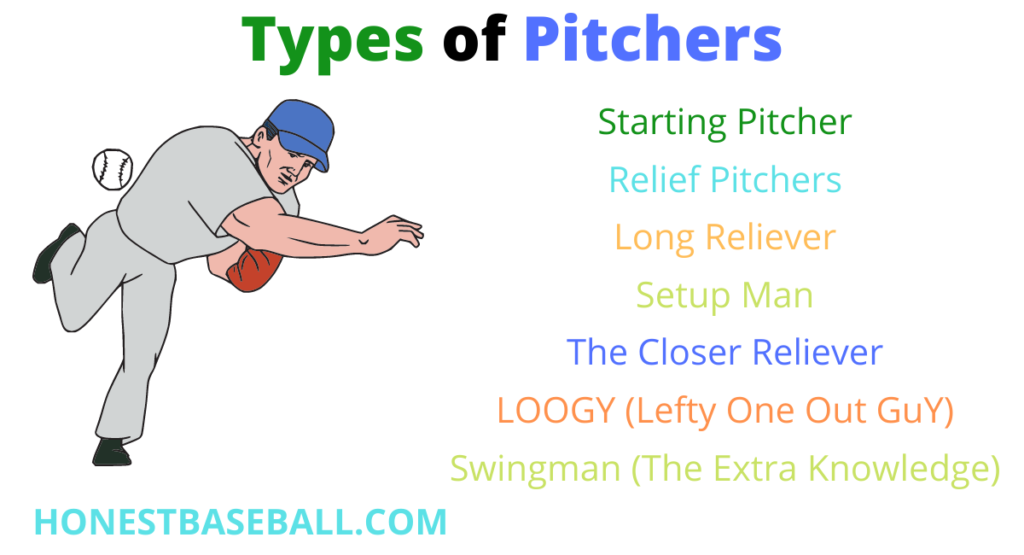
This is the second main phase I teach my class when I educate them on what is a pitcher in Baseball.
From a general overlook, you may think pitching is just a single role. But there are some roles to follow and specific tasks to execute. Just go to the mound and throw the ball to the hitter.
Every pitcher got a particular skill set. That shows the combination of their strength and weakness. According to those, the coach sets their roles and tasks.
Such as,
- Starting Pitcher
He is the first pitcher who starts the first innings. Also, he pitches for the majority of the game. A starting pitcher can pitch for six or seven innings. And that is a usual expectation of the team and the manager.
Sometimes he can pitch for nine innings. This happens in rare cases, only if he can dominate the opponents. This is known as a Complete Game.
- Relief Pitchers
When a starting pitcher gets tired, can not perform as planned, gets hit, or is injured, the relief pitcher comes in. He acts as a reliever. And he also does not pitch like a starter. He has a unique role to play and pitch in limited innings. Later the manager replaced him with another relief pitcher, and that replacement rotated throughout the game as needed.
There are some different types of relief pitchers. And they either rotate around the game or simply come in and go out after finishing their part.
- Long Reliever
This relief pitcher can not be placed in the usual rules. He is kind of the secondary starter pitcher. When the manager forcefully pulls out the starter pitcher either because of his performance or the game is heading to extra innings. This long reliever comes in then.
A long reliever pitches to bring back the lost motion and to take back control of the game. This long reliever is also known as a mop-up man.
- Setup Man
A setup reliever comes in the seventh or ninth innings. His prominent role is to protect the position. If the team is in the leading position or it is a tie. Then the setup man plays to hold the position or prevent the opponent team from getting to the lead.
He usually pitches for one or two innings tops. And helps the closer to make a better closing easily.
- The Closer Reliever
The closer reliever comes in to handle specific situations. For example, to prevent the opponent from making any runs, the game is tied or led by one or two runs and keep it that way, or to save the day from losing. The closer does not mean any pitcher who throws at the final innings or makes the last throw.
The closer reliever is kind of the last line of defense. He solely pitches as hard as possible to stop the opponent. In simple terms, a closer comes when the team needs to be saved from losing. A closer is specially meant for closing the game in the ninth innings. This pressure can make this the hardest position in Baseball for him.
- LOOGY (Lefty One Out GuY)
A LOOGY is the lefty specialist. Suppose one or two lefty batters go wild on the opponent’s team. A LOOGY then comes in as a handler. His purpose is to take these outs.
- Swingman (The Extra Knowledge)
He is also known as the Spot Starter. He can be played as a starter or a reliever. Swingman gets an occasional start in the game. This may happen to give the other pitchers rest for the game, or if the starter gets injured, or maybe because the team has a doubleheader.
Do you know about every position on the Baseball field? If you do not, read this article and learn everything || Positions on a Baseball Field
What Does a Pitcher Do in Baseball
So, what does a pitcher do in Baseball rather than Pitching? You may find it difficult to answer. And maybe you can not find anything. But he must do some additional work besides his main task. Let’s find out overall what he does-
- Pitch
Undoubtedly, a pitcher’s main job is pitching. And by pitching, he helps to control the game. He also fields around the pitching mound to prevent the batter from safely taking a run and reaching the base.
Overall, making a pitch as if the defense stays strong and more hitters get out.
If you can not find anyone to practice your pitch, you can always do that alone || How to practice pitching alone
- Understanding the Game
Playing without understanding is a waste of time and mostly meaningless. To give your best, you must understand the situation.
You will not be asked for your every move. The catcher can call for some pitches very few times. And it also comes from the manager. Though most of the time, you will pitch all by yourself.
You need to know how many runners are on the base and how you will stop them from stealing bases. And how many outs you must have, and you can take out. How are you going to tackle the hitters? Their strengths and weaknesses.
As a pitcher, you must know all of these before pitching.
- Proper Fielding Position
A pitcher just is not meant for pitching. He must control the right infield also. As a pitcher stands in the best position in Baseball.
A Pitcher does not just chase after the ground ball and send it back to the mound. He must cover for first base at all costs. When the First Baseman chases after the ball, the pitcher must fill the empty place.
He is also responsible for being the middleman of the Outfield and Third Base position. If the ball goes to Out Field and the come back route will be – Out field // Third Base// Home Plate. Then the pitcher must run to the between Third Base and Home Plate (near the foul line). So that if any one misses to grab the ball, he can be the backup to catch it.
Rules for Pitcher
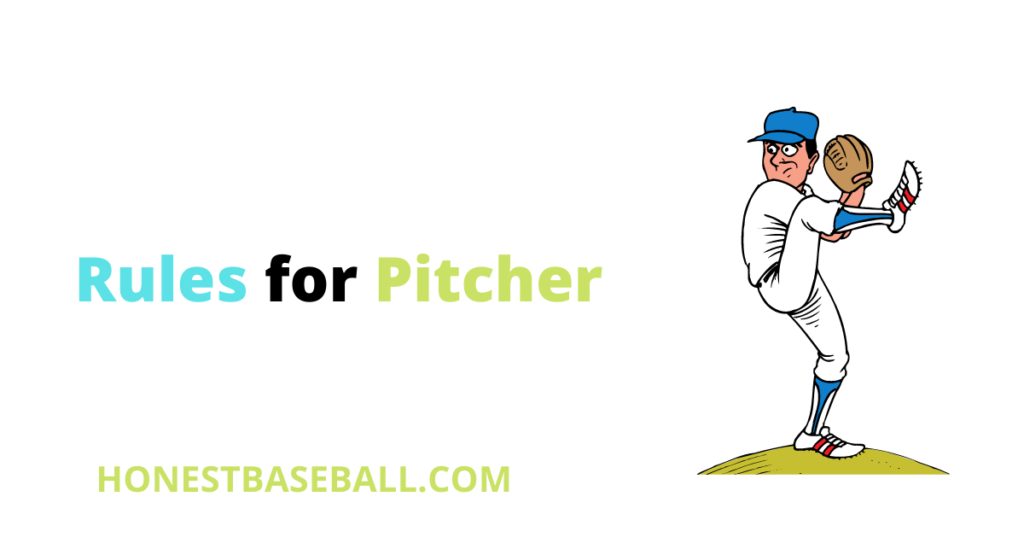
A pitcher must follow some basic rules for fair gameplay. He has to stand on the pitching mound during the throw. And must be touching the rubber plate with one leg.
Overall, stand on the mound and touch the rubber plate with one leg during the throw. And do not leave the strike zone from your target.
Equipment for Pitchers

Like a catcher in Baseball, the pitcher does not require that much equipment. The essential equipment is a Ball cap, Baseball gloves, and Cleats.
To have a better grip on the ball, they have a small pouch of powdered rosin. However, every pitcher wears a uniform.
Learn more about Baseball equipment || Baseball Equipments and Accessories
You can read the following reviews also:
Best Baseball gloves under USD 100
Baseball Pitcher Statistics Presenter
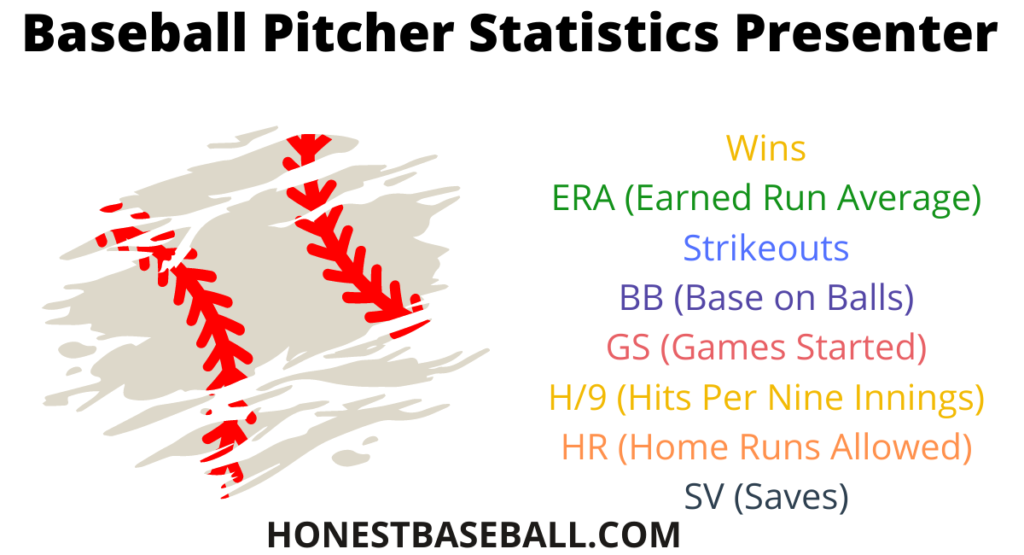
For an overall pitching knowledge from gameplay, pitchers’ stats are important to follow.
There are,
- Wins
- ERA (Earned Run Average)
- Strikeouts
- BB (Base on Balls)
- GS (Games Started)
- H/9 (Hits Per Nine Innings)
- HR (Home Runs Allowed)
- SV (Saves)
Do you want to know more about ERA, read this article || what is a Good ERA
Necessary Characteristics of a Pitcher
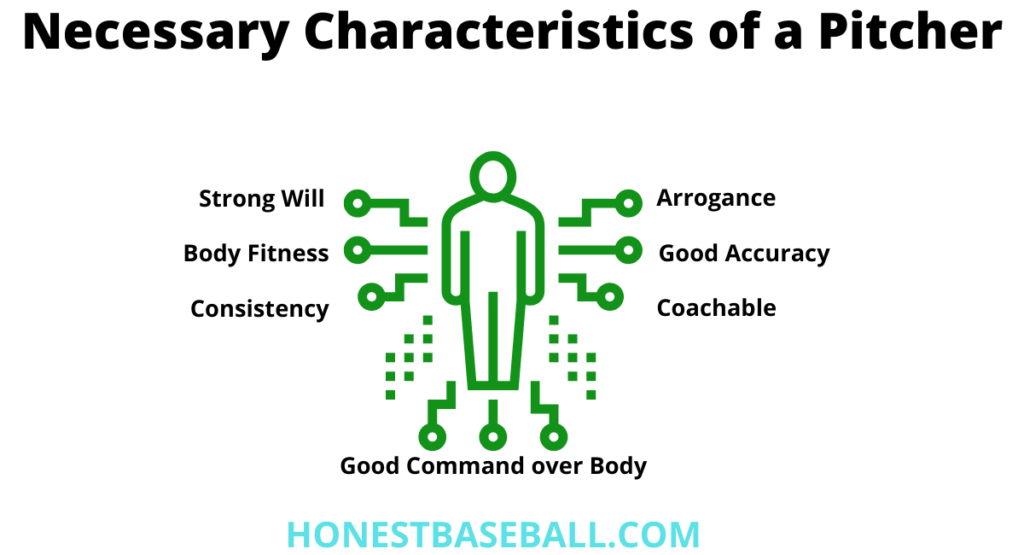
A pitcher’s main objective is to throw the ball to the home plate so the batter can not make any run. So, the pitcher must have a strong and coordinating throwing arm. And good strong legs with thick lower half is a plus point.
Velocity mostly comes in by birth. However, it is not impossible to adapt better velocity in your throwing by practice. At the beginning level, most coaches look for a pitcher with a strong arm who can throw hard. Because if you can throw hard, the hitter will face more problems making contact with the ball.
A game can turn in any direction. Where the ball will go depends on how the pitch is. And in every situation, the game mainly depends on the pitcher. That is why a pitcher has to be mentally tough so that he can handle any situation.
You must have a good command over your pitching. The style, accuracy, and speed must go how you want them to. However, this characteristic is kind of a rare one to have and master. Overall the demand is too high for it.
He must know every technical part of the throwing mechanics. And must have reasonable control over the body.
As a pitcher, having consistency is a usual demand from a coach. This means keep repeating the same task over and over in the same way. In an official game, a pitcher may throw over hundreds of pitches. So, he must repeat the same pitch in a versatile style.
Every situation can be different. And so do every player. A pitcher must have knowledge of his surroundings. What is he facing, and what he must throw? He needs to have a strong mind with good focusing power.
A pitcher should have the willingness to listen to feedback. As a pitcher, while you are standing on the mound, you are the most demanding and dependable character for your team. He gets constant feedback from his pitch manager or catcher throughout the game. So, the pitcher must listen to these suggestions and criticism.
For a pitcher, having a layer of arrogance is a necessary trait. Though it sounds horrible. When you are on the mound and defending your team – vanity can help you to build up more energy. The strength will make you go for long and hard.
Tips and Tricks to Become a Better Pitcher
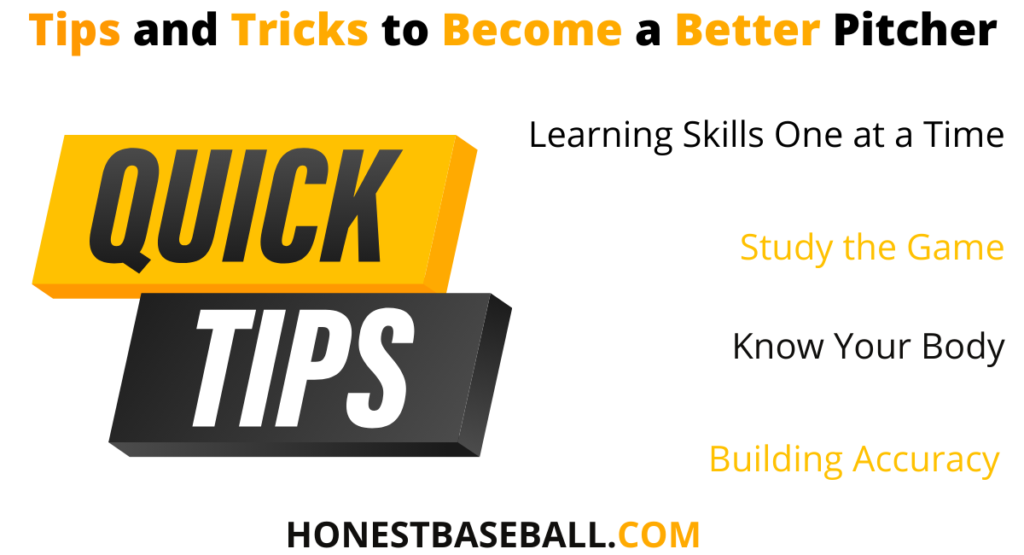
As a pitcher, you must have some characteristics, and to sharpen them, you must keep practicing. But for your overall betterment, you must follow these tips and tricks. They will help you to increase your power and strength. It will keep you mentally fresh and demanding.
- Your Body
Pitching can put massive pressure on your body. And that is why it is kind of complimentary to have a good body shape. Do your cardiovascular training as much as possible so that you can have your breath under control. Keep your whole body in shape. Do not just keep your arms strong. Most strength comes from legs, so do not miss any leg day.
- Building Accuracy
You can throw the ball as hard as possible. But throwing it in the right direction is necessary.
So make a strike zone or have someone in the catcher’s position. Now start pitching and keep practicing.
When you keep touching the strike zone quickly, then set a specific point in the zone and start targeting it.
- One at a Time
Keeping your arsenal full of different types of pitches is very remarkable. But trying to learn everything quickly is not ideal.
Learn one pitch at a time. Take time to master one, then focus on another one. For example, first, you can work on throwing a fastball. When you develop your speed and accuracy, you can work on your swing and curve break.
So, take time, and keep learning, but one at a time.
- Study the Game
Do not just learn how to pitch better.
- Study different games.
- How other pitchers play.
- How different hitters play out the game.
- What strategy do they follow?
- How the hitter handles hard pitchers.
Know your team, know other teams.
Hall of Fame – Pitchers
| No. | Name | Team Name | MLB Time |
| 01. | Bob Gibson | St. Louis Cardinals | 1959–1975 |
| 02. | Pedro Martinez | Boston Red Sox | 1992 to 2009 |
| 03. | Greg Maddux | Atlanta Braves || Chicago Cubs | 1986 to 2008 |
| 04. | Roger Clemens | Boston Red Sox || New York Yankees | 1984 to 2007 |
| 05. | Randy Jhonson | Seattle Mariners || Arizona Diamondbacks. | 1988–2009 |
Frequently Asked Questions
01. What is a Slider Pitch in Baseball?
ANSWER: A slider is a breaking ball. Which goes to the batter down to the strike zone faster than a curveball. Though this pitch never gets more breaks than a curveball. You can make a good deception, and the batter can go off balance only if you throw it correctly.
02. What is a Pitching Out in Baseball?
ANSWER: When your pitch goes out of reach of the batter. And helps the catcher to catch it and out a Base runner with a throw. That is called pitching out.
03. What is a Cutter Pitch in Baseball?
ANSWER: A Cutter or Cut Fastball is a Fastball with a breaking. This breaking goes towards the pitcher’s glove hands side, the more it goes to the home plate.
A Cutter acts between a Slider and a Fastball.
04. How do you know what size Baseball glove you need?
ANSWER: First get a measuring tape and wrap your hand with it (below the knuckle). And measure it in inches and do not include your thumb in the measurement. Add another half inch with what you got.
For example: Your measurement shows your hand is nine inches. Then buy a nine and a half inch glove.
Learn more about measuring your hand for your Glove || How to measure hands for your Glove
05. What does a Catcher do in Baseball?
ANSWER: Basically, he is the team’s captain. He monitors every player’s movements. Then suggest to them how to do well or what to do more. A catcher’s primary objective is to catch every pitch the batter fails to hit. And Suggest the pitcher what and how he should throw through a special sign.
The Closing Thoughts
The pitcher is an exciting player among the fielders. Most of the game just depends on his pitch. A good pitcher can destroy any type of offense through his versatile pitches. And overall this one is the hardest position in baseball to maintain properly.
The way pitchers adopt different pitches. Manage to cover areas beyond their range. Their traits and development of skills. The study and contribution to the game. Overall, these really make this the most challenging position in Baseball.
I hope you learned everything related to what is a pitcher in Baseball. And if you have any additional queries, please feel free to comment below.

Hello everyone. My name is Jason Butler, and I live in California, America. I was a professional AAA Minor League Baseball player. I lost my chance of playing MLB for injury issues, but I did not lose my love for baseball. I attended the coaching training program and am now working as a coach in a small school in San Diego.
I always love to share my experience and knowledge if that can help you. Play baseball, and stay fit.
